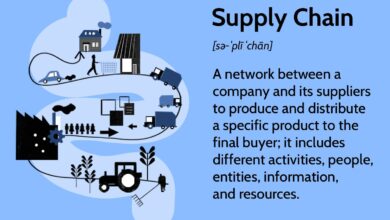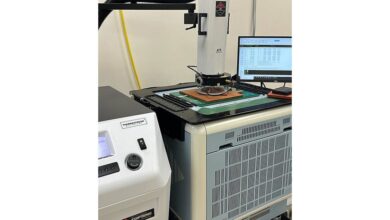Who is an Agile Product Manager & Tips to Become a Successful One

Many managers and leaders are getting worried about the employee-driven system that will make things obsolete as companies start to incorporate the agile framework. These issues mainly arise in the middle pack of managers. However, there is nothing to be worried about because working in an agile environment requires employees to be flexible and be easy going with the change. Besides, agile teams follow an iterative approach, which provides them with the ability to adjust to changing demands from the standpoint of both technology and customer.
Now, we are seeing a pattern of companies adopting the agile style of product development. This method runs on a fuel of collaboration using short development cycles known as sprints. The final goal is to embrace flexibility and continuous improvement to produce a better product at the end of the development cycle.
Furthermore, companies as a whole get a lot of benefits when they implement agile methods of working. For example, they can better align with the needs of the customers and still make a profit. In this article, we are going to learn about the backbone of an agile model, which makes the deployment of the agile product a success. This is the product manager of an agile model. We will explain the role of an Agile Product manager and what makes them different from the product owners.
What Do Agile Product Managers Do?
If you think about the product manager role in agile, you need to look for a group of people because, in the agile model, the work of a manger is distributed among the team members. As a result, the role of the traditional product manager evolves depending on the structure of the organization. Some of the most popular agile models that companies follow are Scrum, Kanban, and Adaptive product Framework (APF).
In the three methods, the work of the product manager is to define the role of team members and give each of them an exclusive responsibility that was handled by the product manager before. The person who was working as a product manager now becomes the Scrum Master and guides the team throughout the development cycle of the product. That’s how the product manager role in the agile model gets dissolved. Each company generally has its own definition for the role of a product manager in agile.
Another essential skill required for getting the position of the agile product manager is that you need to remain calm under pressure. You also need to have great communication skills because, as a leader of the pack, you should be able to make team members clearly understand what the company wants from the team.
Agile Product Manager Responsibilities in Agile Model
An agile product manager is a bridge between the development and the steering committee but, the responsibilities don’t end here, given below is the list of responsibilities one has to take over after being appointed as an agile product manager.
Handling Unpredictability
The first thing you need to take care of is the unpredictability of employees, and you need to handle these efficiently as product timelines are quite strict in agile products. The product manager has to ensure that the development of a product will finish in the given sprint time.
Keep the Team Motivated
As a product manager, you need to motivate your team members. In more significant products, it is easier to get stuck. You need to find a way around that problem and help your team member to get on a schedule.
Distribution of Work
The agile method works on the primary distribution of work, so, to keep the pressure on team members minimum, you need to modify the process of development while still maintaining the pace of the product.
Fixing Issues
It is up to the product manager to manage any issues that arise during the development and escalate it to the right authorities to get it fixed. Likewise, the manager has to talk, to provide an update of the product to all the stakeholders and let them know if there are any delays in the work.
Resourcefulness
The product manager has to provide the proper resources from the authorized individual if there is special software that the development team needs.
Planning Project’s Sprint
As a product manager, you have to provide realistic product plans and sprints and ensure everyone in the team follows it. If there are any changes required, the manager must update the policy and communicate the changes to the whole team.
Difference Between the Agile Product Manager and the Agile Product Owner
These two roles overlap each other because each of them represents the client’s discussion for the development process. If you are working on a big agile project, you need to have both of them to complete the development within the given sprint time. But, if you are a small company, an individual can handle both of these roles.
The job of the product owner is to work closely with the team of developers to articulate the vision of the client, and a product owner is an individual who is responsible for making tough decisions to remove the backlog and keep the project on track.
On the other hand, the product manager is the one who builds an overall road map of the development cycle, and this individual holds a high-level view of what will be the final product after years of development. Besides, the product manager will educate both the customer and upper management about its evolution. And, how each phase of the development cycle is used to create the final product.
|
Find Our Agile Scrum Master Training in Top Cities |
Tips to Become a Good Agile Leader
There are two things that you need, to be successful in the role of a product manager in the agile system. First, you need to respect the client deliverables, and second, you should avoid adding any waste to products.
Given below are the top 12 tips to help you climb the ladder and become a successful Agile product manager:
- All the excessive information and complexity, which the client isn’t masked, are examples of waste that need to be shredded from the final product.
- The budget needs to be broken and distributed throughout the sprint, while questionnaires to identify the requirements of the client have to be done after each phase of the product.
- Don’t add any new attributes for which the client has not agreed to pay you, backing your product with more technology and functionality will not add any value for the client. Keep things simple and precise.
- Always avoid excessive complexity, or else the product won’t be finished in a given sprint and budget. On the other hand, it will introduce a new set of bugs and errors, which creates a higher risk.
- Meetings need to be short and precise, and there is no room for endless agendas in the agile environment.
- During the collaboration meeting, only issues that need to be raised should be related to technical problems raised by the team. This is one of the product manager responsibilities in an agile environment.
- Don’t call for weekly or monthly meetings. It will lead to Muda, so, instead, follow 10-minute meetups at the workstations before starting the work every day. This will eliminate the time wasted during the weekly meetings.
- Create a priority system for the teams and assign them based on the priority of the task, which needs attention. An agile leader needs to work on several products simultaneously. Having no plan does not fit quite well with the philosophy of the agile model.
- The progress of a product needs to be defined cooperatively with the customer, thus, having a client involved during the various phases of products has to be a top priority of an agile product manager.
- To be more agile, always perform risk analysis before the execution of the project. This will help mitigate any uncertain problems that arise in the future— allowing the team of developers to be more efficient and responsive to the issues.
- Make a plan which can be followed in a given deadline. Otherwise, there’s no use of it in the first place.
- Lastly, you have to have exceptional organizational skills, and these include the ability to prioritize the work. When it comes to an agile environment, one needs to have a laser focus on the essential components and deliverables. They need to focus on these essential components while keeping the unnecessary tasks for the very end, and, to the very last and, if possible, let go of them.
Scale Your Agile Career
A great Agile product manager role is tough to find, and it’s a lot tougher to be one. They are people who could do all these things which we have written above (and a few more); while still able to produce an incredible product vision and lead the whole team to it. These are the people with a different mindset, and they are forward-thinking and highly influential.
You can start your journey by enrolling with Simplilearn and become an expert in Agile and Scrum, that will help you scale up on all the aspects of the agile and scrum model and help you learn how you need to implement it in an organization. The path of becoming a great agile product manager might not be easy, but it is the most rewarding one.



